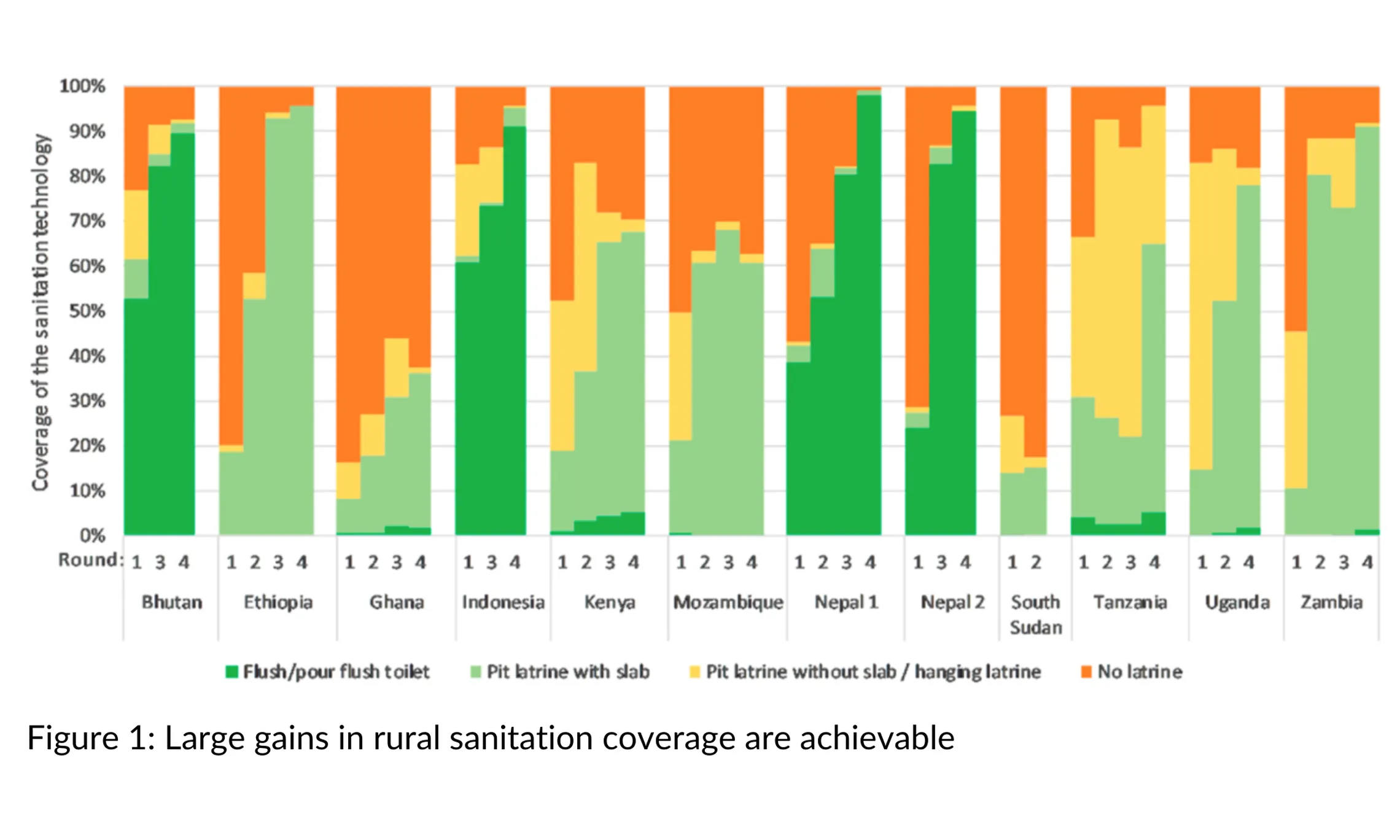Sustaining gains: towards long-lasting access and use of rural sanitation services

Accelerating progress in rural sanitation towards SDG 6 is possible. India’s Swachh Bharat and Nepal's Sanitation and Hygiene Master Plan are examples of how a politically prioritised and well-funded effort can make this happen. A significant body of research provides lessons on how to maximise the impact of rural sanitation programs. But are development partners embedding these lessons in new sanitation programmes? Not yet.
Sanitation Learning Hub, SNV, UNICEF, USAID, WaterAid, and the World Bank with the support of USAID/WASHPaLS came together in November 2021 to consolidate lessons and more intentionally share these with the sector. Building on the 2019 Rural Sanitation Call to Action principles, we organised an online workshop to discuss the latest evidence and experiences of area-wide rural sanitation and related hygiene programming. We tried to capture key lessons that, if embedded in mainstream rural sanitation practice, will help accelerate progress. The lessons are structured around six themes, and presented in this blog series:
Theme 1: Government-led programming
Theme 2: Sustaining gains
Theme 3: Strengthening markets
Theme 6: Area-wide outcomes and data
There were also five overarching messages, which speak to what needs to change more broadly in how we fund, design and implement rural sanitation. You can see the headline message in this infographic, but I'd recommend you check out the workshop report to get all the details and case study examples.

This blog focuses on Theme 2: Sustaining gains
Integrated, area-wide sanitation and hygiene interventions can make a significant difference in access. An independent 2020 study of 12 SNV rural sanitation and hygiene programme implementation in Bhutan, Ethiopia, Ghana, Indonesia, Kenya, Mozambique, Nepal, South Sudan, Tanzania, Uganda, and Zambia showed a 53 percentage points increase in basic sanitation access over a four-year period. In numbers of people, this translates to an estimated 4.8 million new people gaining access to basic sanitation. Clearly, large-scale gains that offers huge potential for change, and must be sustained.

In a follow-up study conducted 1-2 years post-programme implementation by the same authors of the 2020 study, they uncovered that whilst basic sanitation coverage levels were still higher than at baseline, only half of the areas were able to fully sustain or further increase basic sanitation access and use. The other half faced varying levels of slippage.
The researchers observed that the degree of slippage correlated with high increases of sanitation coverage between baseline and endline. Their findings suggested that areas/district that made a fast jump appear to have faced more challenges in sustaining coverage. Higher slippage was also found to be correlated with areas that started with a lower baseline, specifically those with a larger population of groups belonging to lower wealth quintiles.
Whereas the causes for slippage varied across countries, there appeared to be some common factors shared at user level and at the level of the service delivery system. Additionally, similar issues were uncovered during the coverage drive and after achieving high levels of basic sanitation coverage.

Key lessons for sustaining sanitation gains that emerged from the studies and online workshop include:
Recognising that the reasons behind slippage vary among countries and programme areas and that analysis is needed to help identify the most significant underlying causes for slippage.
The need for implementers to realise that interventions aimed to increase latrine coverage differ from those intended to sustain sanitation coverage.
Specific measures to maintain sustainability should be a consistent feature for all programmes and embedded systematically from the start of community public health programmes.
Major involvement of local authorities and ongoing investments are needed for sustained and scaled results.
Longer timeframes are needed to build effective service delivery; evidence indicates that areas or districts that make a fast jump in sanitation coverage may find it harder to sustain these gains.
Behaviour change messaging should be tailored to different programmatic stages (pre-intervention, during intervention and post-intervention) and to levels of toilet use and coverage.
These reflections resonate very well with SNV’s area-wide sanitation programming that integrates demand creation, the nurturing of value chains, behaviour change, and fostering local government accountability to not only increase access to basic and safely managed sanitation but also sustain sanitation gains.
Written by: Jackson Wandera, Global Technical Advisor for Rural Sanitation
Photos: Snapshots of SSH4A Results Programme implementation in Uganda, supported by UKAID (SNV Uganda)